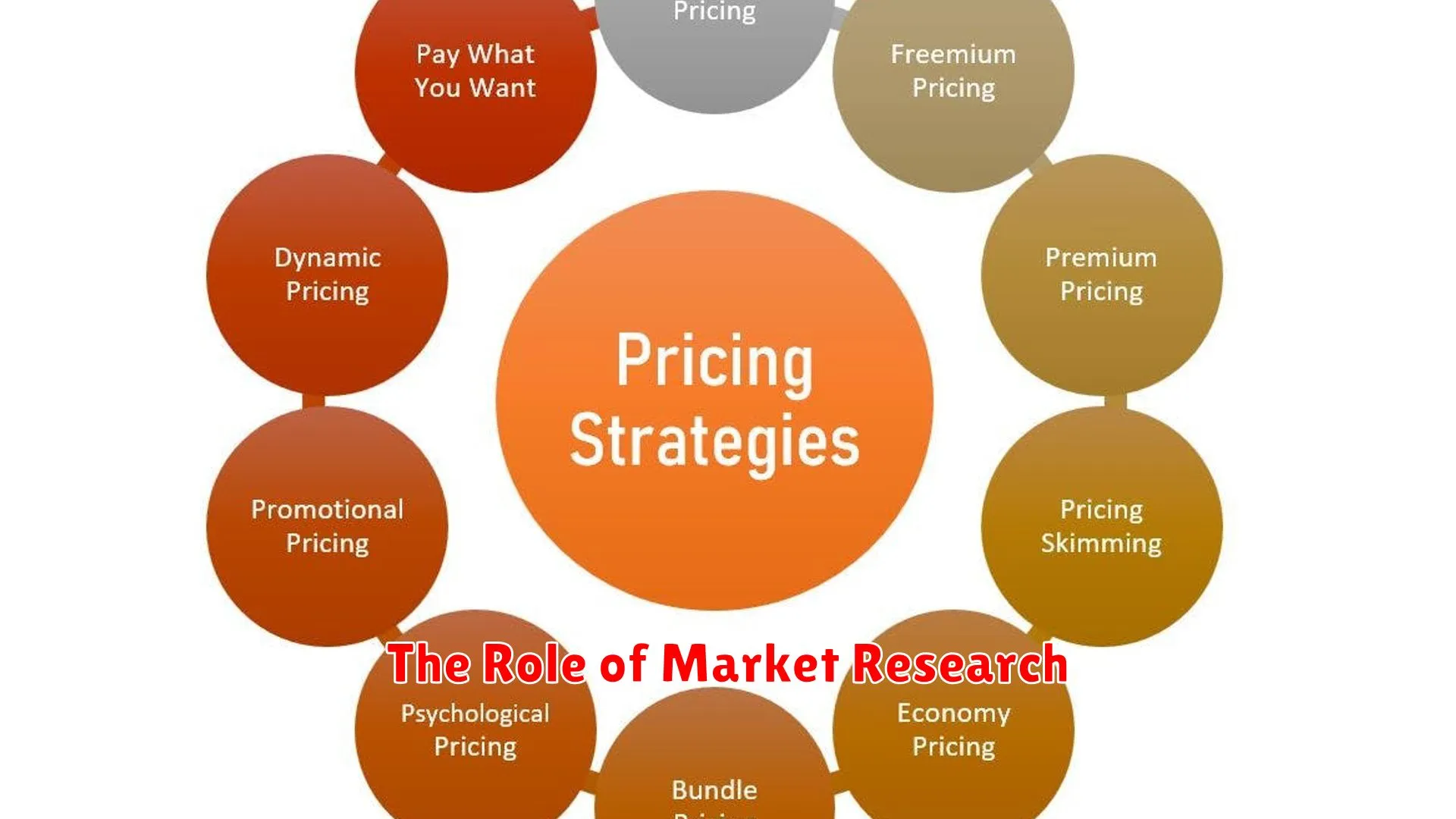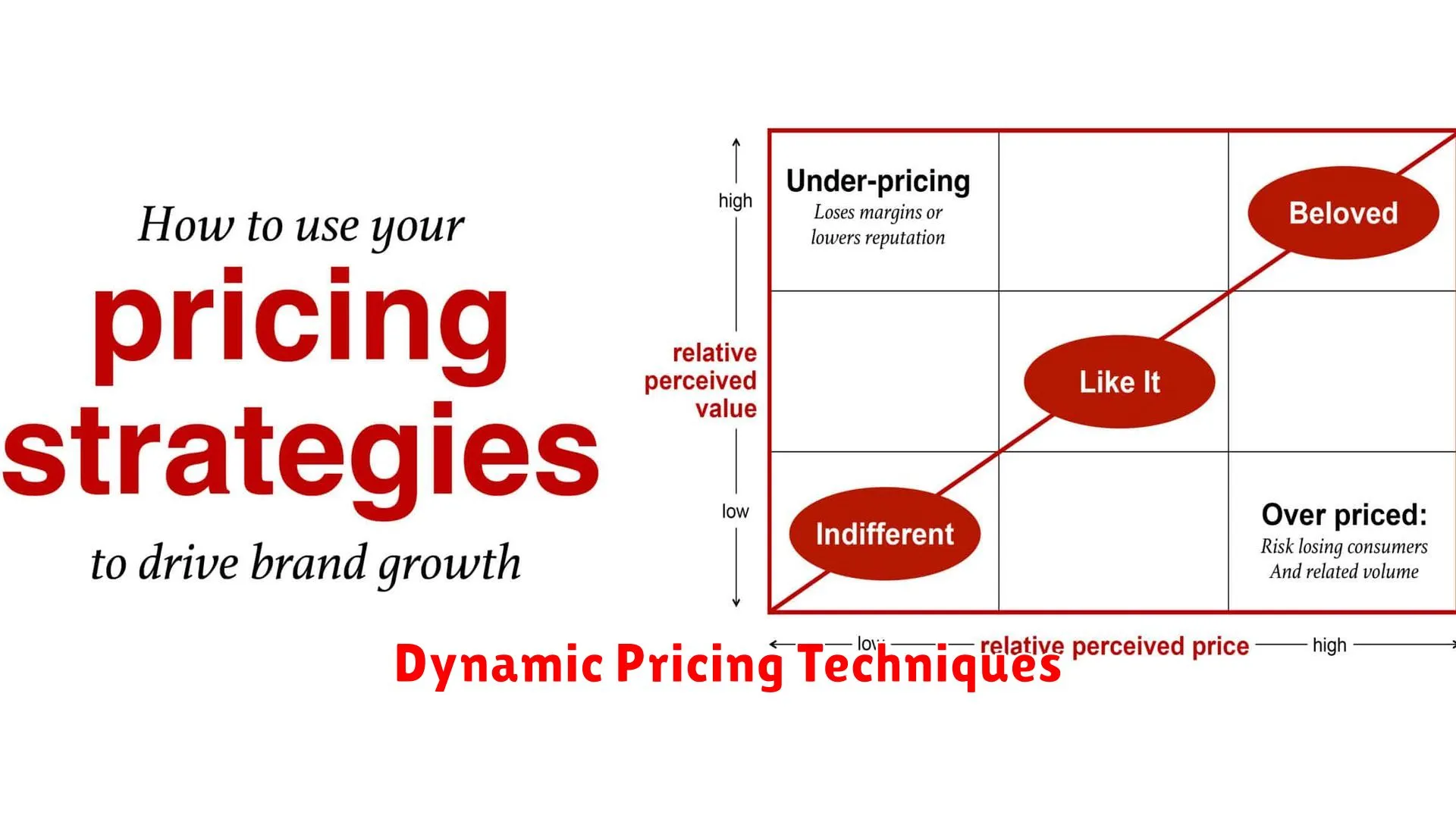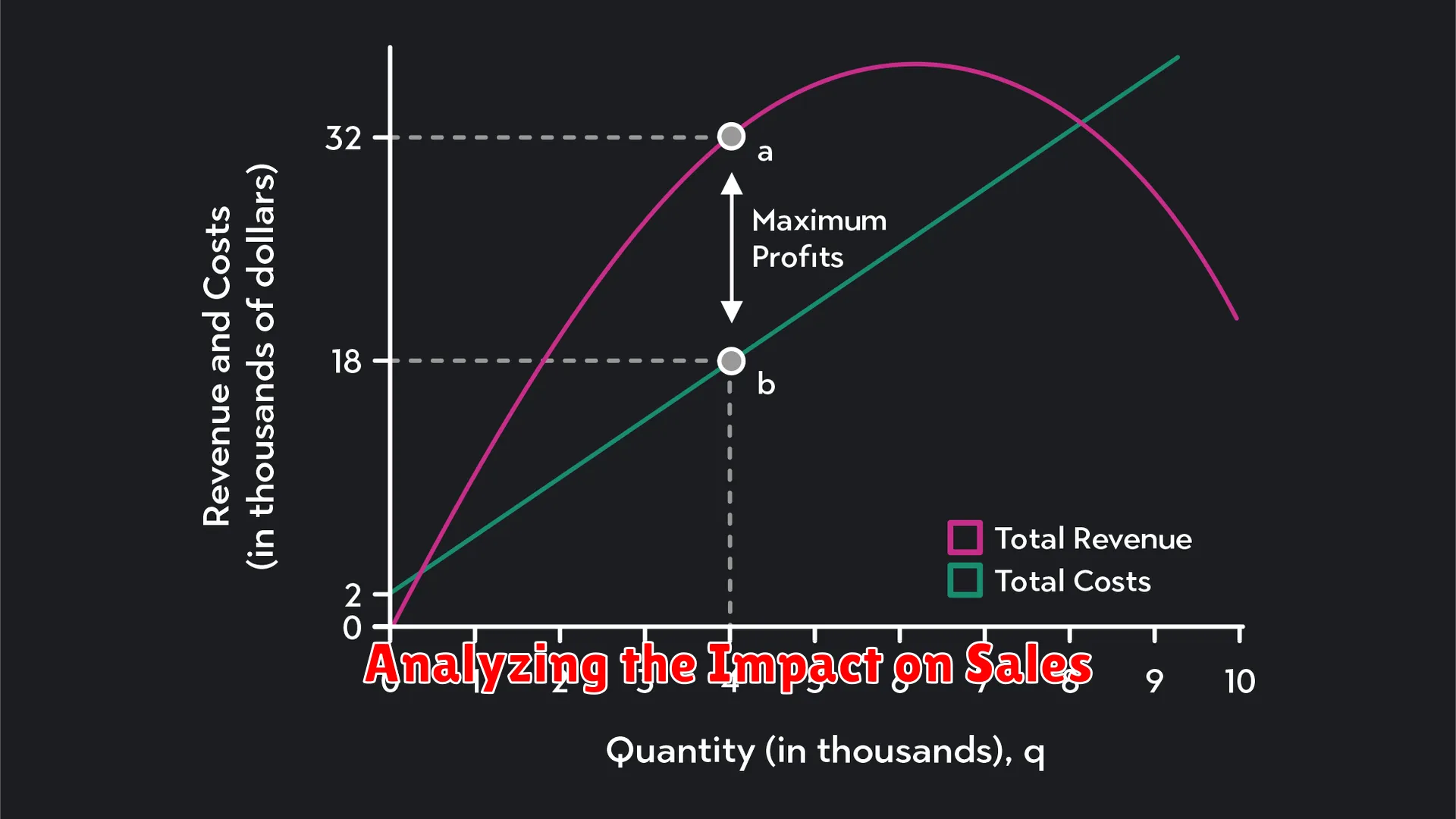Discover how to boost your e-commerce profits through strategic pricing techniques in our comprehensive guide on Maximizing Profits with Effective Pricing Strategies in E-commerce.
Introduction to Pricing Strategies

In the competitive landscape of e-commerce, the art of pricing products effectively plays a crucial role in determining the success of a business. Pricing strategies are not only about setting numbers; they are strategic decisions that can directly impact profitability and customer perception. When implemented correctly, pricing strategies can help businesses maximize profits and gain a competitive edge in the market.
The Role of Market Research

Market research plays a crucial role in maximizing profits for e-commerce businesses through effective pricing strategies. By understanding the market dynamics, consumer behavior, and industry trends, companies can make informed decisions to set optimal pricing that resonates with their target audience.
Identifying Customer Needs: Market research helps e-commerce businesses identify the specific needs and preferences of their target customers. By gathering data on what drives purchasing decisions, businesses can tailor their pricing strategies to offer value and meet consumer demands.
Competitive Analysis: Conducting market research allows e-commerce businesses to analyze their competitors’ pricing strategies. By benchmarking against rivals, companies can position themselves strategically in the market, ensuring their prices are competitive yet profitable.
Forecasting Demand: Market research enables e-commerce businesses to forecast demand for their products or services. By understanding market trends and consumer behavior, companies can adjust pricing dynamically to match fluctuations in demand, maximizing revenue potential.
Testing Price Sensitivity: Through market research, businesses can test the price sensitivity of their target market. By conducting surveys, experiments, or analyzing historical data, companies can determine the optimal price point that generates maximum sales volume and revenue.
By leveraging market research insights, e-commerce businesses can implement effective pricing strategies that not only attract customers but also drive profitability. Understanding the role of market research is essential for businesses looking to succeed in the competitive e-commerce landscape.
Dynamic Pricing Techniques

Dynamic pricing techniques in e-commerce refer to the strategy of adjusting prices in real-time based on various factors to maximize profits. This approach allows online retailers to stay competitive, capitalize on market demand, and increase revenue streams effectively.
One common dynamic pricing technique is segmentation pricing, which involves categorizing customers into different segments and offering tailored pricing based on their behavior, demographic, or purchase history. By implementing this technique, e-commerce businesses can attract price-sensitive customers while also catering to those willing to pay a premium for products or services.
Another effective dynamic pricing strategy is time-based pricing, where prices are adjusted according to the time of day, week, or season. For example, offering discounts during off-peak hours can help drive sales and optimize revenue generation. Additionally, implementing limited-time promotions or flash sales can create a sense of urgency, leading to increased conversions and higher profitability.
Competitive pricing is also a crucial dynamic pricing technique in e-commerce. By monitoring competitors’ prices and strategically setting prices lower or higher based on market trends, online retailers can attract customers looking for the best deal while maximizing their profit margins.
Furthermore, employing dynamic pricing algorithms powered by machine learning and data analytics can enable businesses to automate pricing decisions based on real-time market information, customer behavior, and competitor pricing strategies. This advanced technique helps e-commerce companies adapt quickly to market changes, optimize pricing strategies, and enhance overall profitability.
Psychological Pricing in E-commerce

Psychological pricing is a strategic method utilized by e-commerce businesses to influence consumer perceptions and behavior by setting prices that appear more appealing or attractive. This pricing strategy goes beyond just numbers; it delves into the psychological aspects of how customers perceive pricing to maximize profits and sales.
One common technique in psychological pricing is charm pricing, where prices are set just below a round number, such as $9.99 instead of $10. This practice creates an illusion of a significantly lower price in the eyes of consumers, making them more likely to make a purchase.
Another popular tactic is using bundling and decoy pricing. By offering products in bundles or introducing a slightly higher-priced “decoy” product next to the target product, businesses can influence customers to opt for the more expensive option, resulting in higher overall profits.
Scarcity and urgency techniques also fall under psychological pricing strategies. By highlighting limited stock or time-limited offers, e-commerce businesses can create a sense of urgency among customers, prompting quicker purchase decisions and increased sales.
Furthermore, price anchoring is a method where businesses showcase a higher-priced product alongside the target product. This makes the target product seem more reasonably priced in comparison, therefore increasing its perceived value and desirability to customers.
Overall, understanding and implementing effective psychological pricing strategies in e-commerce can help businesses optimize their pricing structures, enhance customer engagement, and ultimately maximize profits by leveraging the psychological tendencies of consumers in the online marketplace.
Implementing a Pricing Strategy

When it comes to Maximizing Profits with Effective Pricing Strategies in E-commerce, implementing a well-thought-out pricing strategy is crucial. In the competitive landscape of online retail, pricing can greatly impact a business’s bottom line and market positioning.
Here are some key considerations for implementing a successful pricing strategy:
- Understanding Your Market: Conduct thorough market research to analyze your target audience, competitors’ pricing models, and industry trends. This insight will help you tailor your pricing strategy to meet market demands.
- Value-Based Pricing: Focus on the value your products or services offer to customers. A value-based pricing model ensures that your prices reflect the perceived value by customers, allowing you to capture higher margins.
- Dynamically Adjust Prices: In the dynamic e-commerce environment, continuously monitor and adjust your prices based on demand fluctuations, seasonality, and competitor pricing changes. Utilize pricing automation tools to streamline this process efficiently.
- Utilize Promotions and Discounts: Strategically use promotions, discounts, and special offers to attract customers, drive sales, and create a sense of urgency. Implementing time-limited discounts or bundling products can increase conversion rates.
- Personalized Pricing: Leverage customer data and analytics to implement personalized pricing strategies. Tailoring prices based on customer preferences, purchase history, and behavior can enhance customer loyalty and retention.
Analyzing the Impact on Sales

When it comes to Maximizing Profits with Effective Pricing Strategies in E-commerce, it is crucial to delve into analyzing the impact on sales. Effective pricing strategies directly influence the sales performance of an e-commerce business, making it vital to understand how pricing decisions can affect the bottom line.
One key aspect of analyzing the impact on sales is evaluating price elasticity. By assessing how changes in price affect sales volume, e-commerce businesses can determine the optimal pricing points that maximize revenue. Understanding the price sensitivity of customers helps in setting prices that strike a balance between attracting buyers and generating profits.
Moreover, analyzing sales data alongside pricing adjustments provides valuable insights into consumer behavior. Trends in sales figures following price changes can inform e-commerce businesses about the effectiveness of their pricing strategies. This data-driven approach enables businesses to make informed decisions to enhance their profitability.
Furthermore, considering the competitive landscape is essential in analyzing the impact on sales. Understanding how rivals’ pricing strategies influence market demand and consumer preferences can guide e-commerce businesses in setting competitive prices that attract customers while maintaining profitability.
Case Studies: Successful Pricing Models

When it comes to e-commerce, pricing plays a crucial role in maximizing profits and attracting customers. To achieve success in e-commerce, businesses need to carefully consider their pricing strategies. Let’s delve into some case studies that showcase successful pricing models:
1. Dynamic Pricing:
One effective pricing model is dynamic pricing, where prices are adjusted in real-time based on demand, competition, and other market factors. Amazon is a notable example of a company that successfully implements dynamic pricing. By leveraging data analytics, they can optimize prices to boost sales while maximizing profits.
2. Freemium Model:
Another successful pricing model is the freemium model, commonly used by software companies like Spotify and Dropbox. This model offers a basic service for free while charging for premium features. It attracts a large user base with the free offering and converts them into paying customers by providing additional value through premium services.
3. Bundle Pricing:
Bundle pricing involves offering related products or services together for a discounted price. One company that effectively uses bundle pricing is Netflix, with its different subscription tiers offering varying levels of services at different price points. This strategy encourages customers to upgrade to higher tiers for more features.
By studying and implementing successful pricing models like dynamic pricing, freemium models, and bundle pricing, e-commerce businesses can optimize their pricing strategies to drive revenue growth and enhance customer satisfaction.
Conclusion: Key Takeaways for E-commerce Entrepreneurs

Maximizing profits with effective pricing strategies in e-commerce requires a combination of strategic planning, market research, and flexibility. Here are some key takeaways for e-commerce entrepreneurs looking to boost their revenue:
- Understand Your Market: Conduct thorough research to determine market demand and competitors’ pricing strategies. This insight will help you set competitive prices that resonate with your target audience.
- Implement Dynamic Pricing: Utilize dynamic pricing tools and algorithms to adjust prices based on factors such as demand, competitor pricing, and customer behavior. This can help optimize profits and maximize sales.
- Offer Discounts and Promotions: Use discounts, promotions, and special offers strategically to attract customers, encourage repeat purchases, and create a sense of urgency that drives sales.
- Monitor and Analyze Performance: Regularly monitor the performance of your pricing strategies through data analysis and tracking key metrics. This will allow you to identify areas for improvement and make data-driven decisions.
- Stay Agile: In the dynamic e-commerce landscape, be prepared to adjust your pricing strategies quickly in response to market changes, seasonal trends, and customer feedback.
Conclusion
In conclusion, implementing strategic pricing in e-commerce is crucial for maximizing profits and staying competitive in the market.

